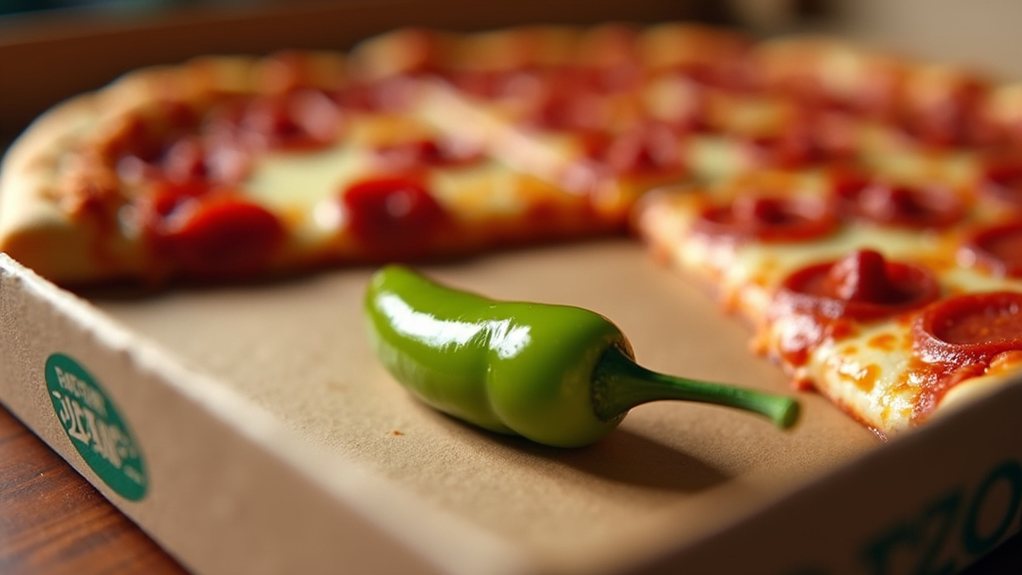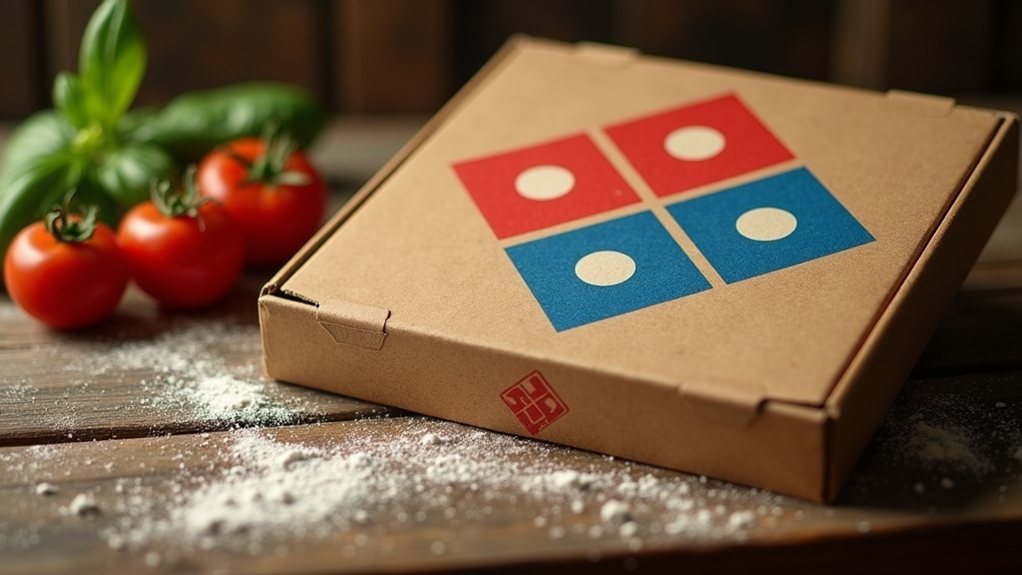The pepperoncini pepper that accompanies every Papa John's pizza represents more than just a complimentary garnish. This mild, tangy addition stems from founder John Schnatter's early restaurant experiences, where he noticed customers' positive reactions to the unexpected treat. The simple pepper, tucked in the corner of millions of pizza boxes nationwide, has evolved into a signature brand element that competitors cannot replicate. What began as a small touch has transformed into a meaningful tradition, but the story behind this distinctive practice reveals something even more interesting about consumer psychology.
The Pepperoncini Tradition
A small green surprise awaits customers when they open a Papa John's pizza box—the signature pepperoncini pepper that has become synonymous with the brand's identity. This distinctive tradition traces back to John Schnatter's early career experiences at Rocky's Sub Pub, where he observed the positive customer reaction to including a complementary pepper with meals.
When Schnatter founded Papa John's, he incorporated this thoughtful touch into his business model, creating what would become a lasting brand signature.
The peppers themselves are mild, tangy, slightly spicy, and typically pickled before being placed into pizza boxes. Originating from Turkey, one of the world's largest pepper producers, these green garnishes have become so integral to Papa John's operations that the company imports substantial quantities to serve its more than 5,000 locations worldwide. Much like Coletta's BBQ pizza, this simple addition revolutionized how customers experience their pizza. Approximately 25% of Turkey's entire pepperoncini crop is purchased by Papa John's to maintain their signature tradition.
Mild, tangy Turkish pepperoncinis arrive by the shipload to deliver that signature Papa John's experience in every box.
Many customers have developed their own rituals for enjoying the pepper, with some biting off the tip and using the juice to add flavor to their pizza slices. For optimal enjoyment, some customers choose to reheat their pizza using various methods to enhance the pepper's complementary flavors.
In the late 1990s, as Papa John's experienced rapid expansion, the company's massive demand for pepperoncinis contributed to a global shortage. This market disruption illustrated the considerable economic influence that large restaurant chains can exert on specific agricultural commodities, as Turkey's pepperoncini farmers scrambled to meet the unprecedented demand from this single American pizza company.
Store employees frequently report customers requesting extra peppers, highlighting how this simple addition boosts customer loyalty and satisfaction. The pepper serves as a signature element that distinguishes Papa John's from other pizza competitors in the market.
While there are no official rules for how to consume the pepper, many enthusiasts have their preferred methods, from eating it whole to slicing it as a pizza topping. The freedom to enjoy this unexpected bonus however one chooses adds to its appeal.
This unassuming green pepper, positioned alongside every pizza, represents more than just a flavor improvement—it embodies Papa John's commitment to distinctive customer experience and has become an enduring element of the brand's identity, connecting millions of pizza lovers to a tradition born from one restaurateur's simple gesture of hospitality.






